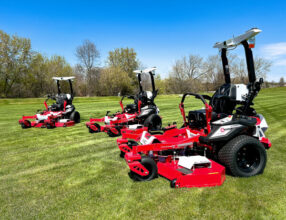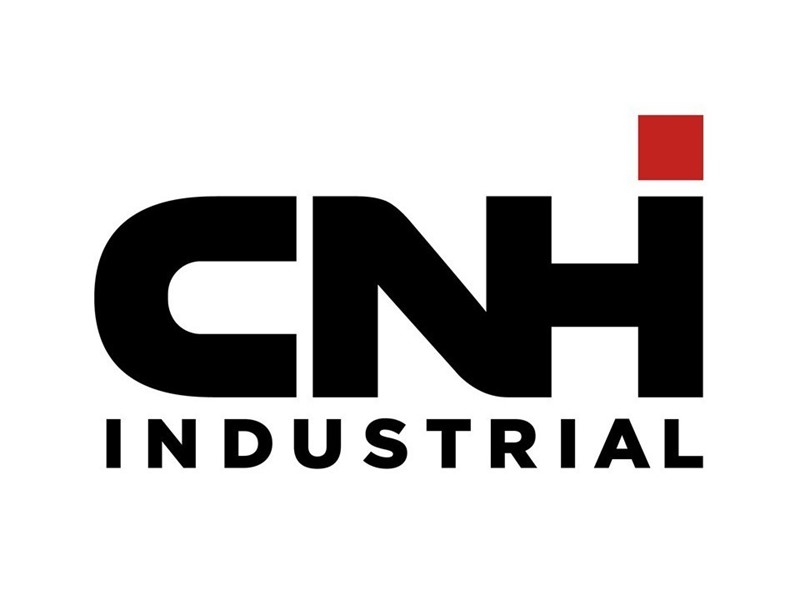Five keystone pillars of profit (Part IV): Improving gross profit earnings
Fourth article in a series
By Jim Yount
When it was time to bring your 2013 business year to a close at the end of December, was it necessary to borrow from your line of credit to pay end-of-year bills? If so, the New Year began with an operational expense debt burden. Have you said to yourself, “I enjoy owning and managing my business, but I’m tired of working for nothing.”? Have you ever said to yourself, “Why do I keep running out of money at the end of the month (or year)? Something must change, but I do not know what to do.”?
With all due respect, I would say to you, “Stop selling your product and services for less than their value/worth.” As a business owner, I place myself in this mix when I ask these questions. Are we not aware of our gross profit requirements? Are we not aware of our earning goals? Do we not know our annual break-even profit goal and time frame? We can and should know these numbers. There is no greater feeling than to be able to say to yourself, “By the end of September, we will have earned gross profit sufficient to paying all annual costs of doing business, including taxes. These last three months of profit may be identified as return on my investment.” Call it what you will, but it’s a feel-good feeling to have this amount of positive cash flow. One final question: “Will I have sufficient funds in the bank to get through the first quarter of a new year?”
As we move closer to some answers, it’s very important to remember these three golden nuggets of wisdom.
Nugget #1: Owning and managing a business for profit and growth is a learned skill and cannot be inherited.
Nugget #2: The only way to keep score in business is to count the money.
Nugget #3: Never, never, never stop learning.
Isn’t it time to start learning and earning exceptional profits? Isn’t it time to receive an equitable return on dollars you have invested?
At Jim Yount Success Dynamics (JYSD), we have unwillingly participated in this recession. Together, let’s say to ourselves, “I will not let these events change my dream.” Yes, there are more challenges today than a few years ago. And yes, as a survivor of this recession, there are additional opportunities for growing sales, growing profit, and growing income. However, business as usual no longer works.
For us to harvest our share of success, new business strategy must include a richer understanding and sharper focus on the “Five Keystone Pillars of Profit,” their application, and results. When things are not producing as planned, make necessary adjustments and move forward.
Let’s revisit the third article in this series from December 2013 Outdoor Power Equipment by referencing that article’s analysis charts, which re-appear below, to receive the most from a simple yet powerful equation.
ANALYSIS CHART: Equipment defined as engine driven. Brand not identified.
Brand
Group Sales
Net of Sales
Cost of Sales
Percent Total Sales
Gross Dollars
Gross Profit
Number 1
Equipment Parts/Access. Total
558,000
87,000
645,000
502,000
62,000
564,000
18.97
56,000
24,000
80,000
10.04
27.59
12.40
Number 2
Equipment Parts/Access. Total
508,000
234,000
742,000
408,000
144,000
553,000
21.82
99,000
90,000
189,000
19.48
38.37
25.47
Number 3
Equipment Parts/Access. Total
321,000
15,000
336,000
295,000
9,500
304,000
9.88
26,000
5,400
31,000
8.38
36.00
9.23
Number 4
Equipment Parts/Access. Total
238,000
65,000
303,000
201,000
44,000
245,000
8.91
37,700
21,000
58,000
15.79
32.31
19.14
Number 5
Equipment Parts/Access. Total
124,000
90,000
214,000
104,000
63,000
168,000
6.29
20,000
27,000
46,000
16.13
30.00
21.50
ANALYSIS CHART: Manufacturers of engines, parts, accessories and miscellaneous items.
Supplier
Group
Net Sales
Cost of Sales
Percent Total Sales
Gross Dollars
Gross Profit
Supplier 1
Parts/Access.
217,000
123,000
6.40
94,000
43.32
Supplier 2
Engines
125,000
81,000
3.68
45,000
36.00
Supplier 3
Equipment
59,000
34,000
.017
25,000
43.30
Supplier 4
Parts/Access.
56,000
35,000
.016
21,000
37.50
Supplier 5
Parts/Access.
42,000
36,000
.012
6,000
14.29
Supplier 6
Parts/Access.
40,000
24,000
.011
16,000
40.00
Supplier 7
Parts/Access.
35,000
30,000
.010
5,300
15.14
Supplier 8
Parts/Access.
34,000
19,000
.010
15,000
44.12
Remember my German friend who said “We all live by sales.” Using “Five Keystone Pillars of Profit, Ageless Formula for Success,” we’ll analyze/study NET SALES and see how our case history lives.
Profit Pillar number one, NET SALES, were $3,400,000. Profit Pillar number two, COST OF GOODS, was $2,400,000, or 70.59 percent of NET SALES. By subtracting cost of goods from NET SALES, we determined Profit Pillar number three, GROSS PROFIT, was $1,000,000, or 29.41 percent. Profit Pillar number four, OPERATING EXPENSES, was $900,000, or 90.00 percent. Subtracting OPERATING EXPENSES of $900,000 from GROSS PROFIT of $1,000,000, left Profit Pillar number five, PRETAX NET PROFIT, of $100,000, or 10.00 percent. If we enter $100,000 pretax net profit in our calculator, push the divide key, enter net sales of $3,400,000, and then push the equal key, we will discover the percent of profit was 2.94 percent. We know from experience that a pretax net profit of 2.94 percent is about average. We also know the profit margin is not sufficient to provide long-term business sustainability.
I trust you are asking yourself, “What should be our pretax net profit (PTNP) margin?” Rather than approach the issue from a percentage point of view, let’s talk about how to double your pretax net profit margin within a reasonable time frame. I’ve seen far too many PTNP margins in the category of less than 2 percent.
For those of you who have not attended our workshops, or invited us to your business for on-location strategic business planning and consulting, follow me as I introduce “Increase your pretax net profit and personal income by using JYSD’s ONE-PERCENT PRINCIPLE.”
It’s a simple formula to follow, yet not necessarily easy to introduce and enforce. Follow this example of real-world application using the numbers listed above.
On sales of $3,400,000, the gross profit was $1,000,000, or 29.41 percent. The cost of goods sold was $2,400,000. If you increase the selling price on all exact goods and services sold by 1 percent, and the cost of goods remains the same, what would be the results? Net sales would increase to $3,434,000 with a net gain of $34,000. All that’s necessary to gain this $34,000 is simply change the selling price by 1 percent. All it takes is time at the computer to make changes. It can be done.
What impact would it have on net profits if you lowered the cost of goods sold by 1 percent? The $2,400,000 cost of goods would be reduced to $2,376,000. That’s another $24,000 in profit. Additional profits have grown by $58,000.
Operating expenses were $900,000. Go to work on reducing the overall cost of business operation by 1 percent. Cost of operation is reduced to $891,000. That’s another $9,000 in profit. Additional pretax net profits have grown to $67,000.
Before making the 1-percent adjustments, pretax net profit was $100,000. It now totals $167,000. The pretax net profit has grown by 67.00 percent.
Based on what I have witnessed, here are a few quick comments on gross profit percentage on a few line items. As I write these comments, I am looking at the brand name. In a broad sweep, I realize no two dealers are identical. They do not have the same competitor and are not the same size, nor do they have the same debt burden, same mix of products on the floor pulling in customers, or the same profitability goals. But every dealer that wants to stay in business for the long-term must be profitable.
Brand number 1: Commercial equipment. I would suggest 10-percent margins are too low. I’ve seen profit margins at 12 to 15 percent on this same brand. Profit margins on parts should be targeted at 40 percent.
Brand number 2: Handheld equipment margins can be as much as 25 to 27 percent. Profit on parts/accessories can be as much as 43 to 48 percent.
Brand number 3: Recreation equipment. Profit margin of 8.38 percent produces cash flow but seldom at a sustaining rate. You do the math.
Supplier charts: Replacement engines tend to be at 25 to 30 percent. Engine and other equipment components should earn profit at more than 40 percent. I have seen dealers with parts margins at 55 to 60 percent. Accessory margins will be from 25 to 50 percent.
If you are a dealer/retailer and desire to maximize your profit potential, here’s an exercise for those wanting to improve gross profit earnings.
Determine the top product brand producing the most sales and print a detail report that includes equipment sales by model number. Also, print a line item detail report by part/accessory number. Print a full detail report for all major brands of equipment and accessories.
After printing the reports, select the top selling brand with the most sales and view each line item. Make adjustments to all numbers not meeting your profit margin minimum. Establish a new selling price at the margin you desire.
After making the changes, monitor the results every day until you achieve your profit goals. Start with reviewing the end-of-day report. If you are faithful to your efforts, you will see your gross profit dollars grow.
If you commit to using the “One-percent Principle,” you will be delighted with the return on your effort. It works every time it is used. It will continue to work throughout your career.
Jim Yount is the founder and chief executive officer of Jim Yount Success Dynamics LLC. For more than 30 years, he has hired, trained, managed, sold, marketed, and motivated. Extensive real-world experience in retailing, distribution and working with manufacturers, both domestic and international, has earned Jim the reputation as a trustworthy and knowledgeable professional in his field. As a results-oriented speaker, he is dedicated to inspiring groups of 30 to 3,000 to develop their talents and realize their full potential. As a business consultant, teacher and coach, Jim is experienced at challenging leaders to explore their operational procedures and change unacceptable practices that are producing poor results. For more information, contact Jim at jimyount@hughes.net or (903) 796-3094 or visit his website at www.jimyountsuccessdynamics.com.



